Bistrik 1, 71000 Sarajevo
Location
Treasured destination. Unforgettable experiences. We are in the heart of Sarajevo.
The best places to visit when in Sarajevo are inside 5 minutes walk from our hotel.
Our friendly staff is always available for you at:
Tel: +387 (0)33 570 050
Fax: +387 (0)33 570 051
ISABEGOV HOTEL
Today’s Isa Beg’s Hamam (Old Turkish Bath) has been built in 1890 and is in the place of an old Waqf building that carries the same name and had the same purpose. The Old Bath is mentioned first time in a waqf document belong to Isa Beg Ishakovich and dates to 1462 but the details of the structural and architectural dynamics of the building is almost non-existent.
GAZI HUSREV-BEY MOSQUE
The Gazi Husrev-bey Mosque (Bosnian: Gazi Husrev-begova Džamija, Turkish: Gazi Hüsrev Bey Camii), is a mosque in the city of Sarajevo, Bosnia and Herzegovina. Built in 16th century, it is the largest historical mosque in Bosnia and Herzegovina and one of the most representative Ottoman structures in the Balkans. Being the central Sarajevan mosque since the days of its construction, today it also serves as the main congregational mosque of the Islamic community of Bosnia and Herzegovina. It is located in the Baščaršija neighborhood in the Stari Grad municipality and, being one of main architectural monuments in the town, it is regularly visited by tourists.
INAT KUCA
Prior to 1914, the Austro-Hungarians who ruled Sarajevo wanted land in the Sarajevo Old Town district to build a city hall and library. The land had a home on it and, despite offering the owner money, he refused and continued to refuse even when told that he had to move. When the officials threatened him, he moved the house and rebuilt it, piece by piece, on the other side of the Miljacka river, as a way of spiting the officials. The Sarajevo spite house operates today as a restaurant is called "Inat Kuća" which means "Spite House."
SARAJEVO CLOCK TOWER
Sarajevo Clock Tower (Sahat Kula) is one of the highest and most beautiful ones in Bosnia and Herzegovina. It was built in the 17th century. After a fire in 1697, when it was burnt during the invasion of Eugene of Savoy, Sahat Kula was restored, but again it was damaged, and again renewed in 1762.
LATIN BRIDGE
Latin Bridge, is a historic Ottomanbridge over the River Miljacka in Sarajevo. The northern end of the bridge was the site of the assassination of Archduke Franz Ferdinand of Austria by Gavrilo Princip in 1914, which became a casus belli of World War I.
SEBILJ
The Sebilj is a pseudo-Ottoman-style wooden fountain (Sebil) in the centre of Baščaršija square in Sarajevo built by Mehmed Pasha Kukavica in 1753. It was relocated by Austrian architect Alexander Wittek in 1891. It is also frequently called "the pigeon square".
THE NATIONAL AND UNIVERSITY LIBRARY OF BOSNIA AND HERZEGOVINA
It was designed in 1891 by the Czech architect Karel Pařík, but criticisms by the minister, Baron Benjamin Kallay, caused him to stop working on the project. It was initially the largest and most representative building of the Austro-Hungarian period in Sarajevo and served as the city hall. The library was reopened on the May 9, 2014.
THE EMPEROR'S MOSQUE
The Emperor's Mosque (Bosnian: Careva Džamija, Turkish: Hünkâr Camii) is an important landmark in Sarajevo, Bosnia and Herzegovina, being the first mosque to be built (1457) after the Ottoman conquest of Bosnia. It is the largest single-subdome mosque in Bosnia and Herzegovina, built in the classical Ottoman style of the era.It was built by one Isaković-Hranušić who dedicated it to the Sultan, Mehmed the Conqueror, the conqueror of Constantinople. Considered one of the most beautiful mosques of the Ottoman period in the Balkans, the mosque features a roomy interior and high quality decorative details, such as the mihrab.
OLD ORTHODOX CHURCH
It is believed that the Old orthodox Church of saint Archangel Mikhail and Gabrielthis was initally built in the 5th or 6th century. During its history, it suffered damages for many times. Its present appearance dates back from 1730, after repairs to the damage by fire in 1724. This church is greater in width than in length, lack a projecting apse, and has a nave surrounded on three sides by a colonnade make it a unique example of well-preserved church architecture in this part of the world. The most valuable feature of the interior of this monument, a museum based on its treasury, is its carved iconostasis with icons by Master Radula, dating from 1674, Maksim Tujkovic, dating from 1734, Aleksija Lazovic and an anonymous artist dating from the early 19th century.
BASHCHARSHIJA MOSQUE
Havadže Duraka’s Mosque was built in the mid-XVI century. Originally the mosque had a wooden dome which was destroyed in the attack by Eugene of Savoy in 1697. The mosque acquired its present look with the stone dome, after World War II.
Follow
Join us on social media and never miss a post from our incredible journey.
